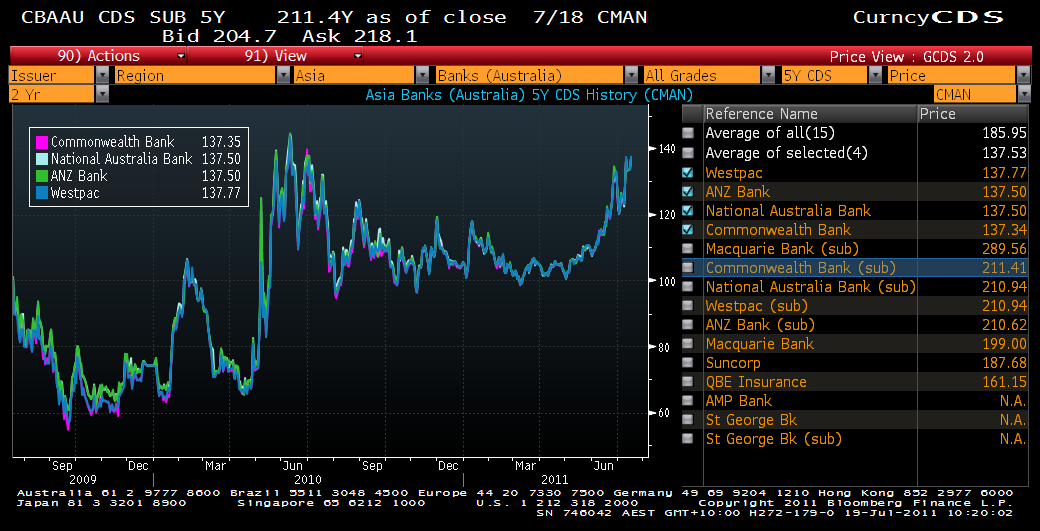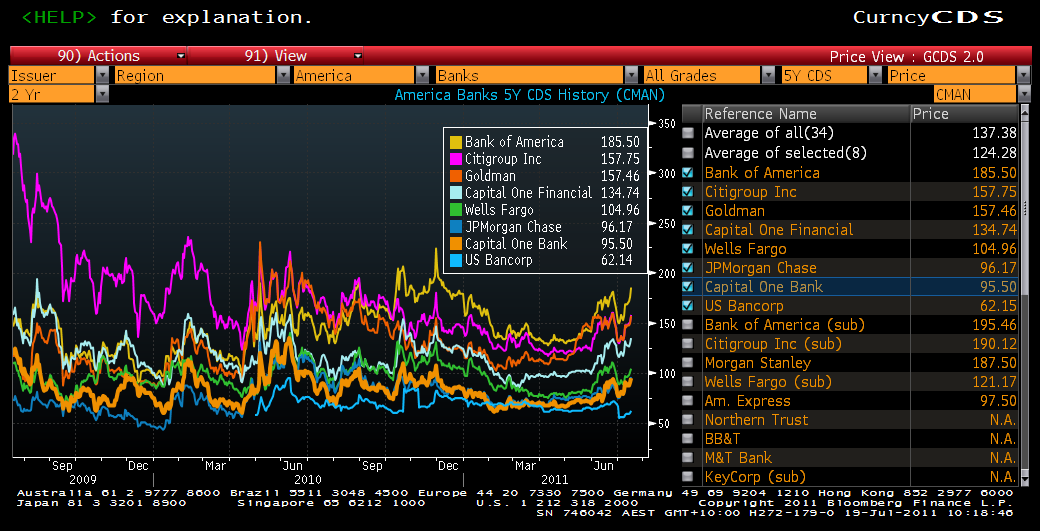A credit default swaps (CDS) is a derivative that enables market players to insure holdings of bonds (as well as gamble on their price movements). CDS prices of Australia’s big four banks are on the move – the wrong way. Here is a chart of recent market action:

On a longer term time time frame we can see that the blowout is very rapidly approaching the risk aversion pricing that struck during the first European debt crisis in May 2010:

For what it’s worth, that looks like a cup and handle formation on the chart, which suggests a further move upwards.
For some context, here are the CDS prices of other assorted American banks:


We can conclude several things. First, Australian bank CDS prices are suggesting a much higher risk profile to their debt than credit ratings suggest. The volatility also shows that the banks’s debt is considered relatively risky next to many major US banks. Finally, the congruence of the move in big four’s debt, I would argue, shows how global markets pretty much perceive them as a single block, protected more or less by the same government guarantee.
The good news is that the underlying bond spreads have not moved as much as the CDS prices suggest.

